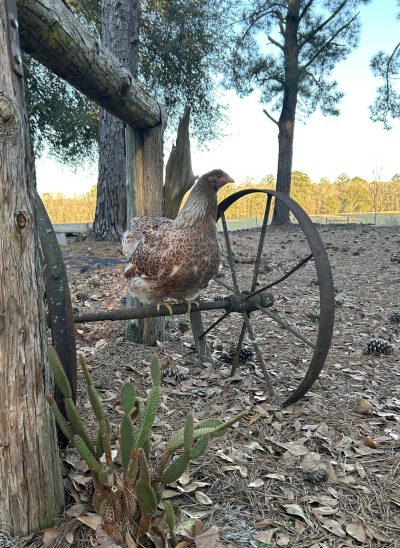Chickens go through several stages of growth, each with specific needs to ensure their health and productivity. While some may argue that there are numerous phases throughout a chicken’s lifespan, for simplicity, we’ll break them down into three key phases: the Starter Phase, Grower Phase, and Layer Phase. Understanding these phases and providing the appropriate care and nutrition during each one is essential for raising a healthy, productive flock.
–
Starter Phase
The Starter Phase begins as the chick hatches and lasts until it reaches 5-6 weeks old. During this crucial time, our goal is to establish a solid foundation for the chick’s growth. At this stage, chicks are developing their digestive systems and learning to digest food properly. Starting them on a high-quality chick starter feed with at least 18% protein provides the essential nutrients needed for healthy growth and development.
A well-balanced chick starter feed will contain the appropriate amino acids to support growth and immune system development. As chicks are especially vulnerable to illness, it’s important to choose a feed that includes prebiotics and probiotics to promote gut health. If your chicks were not vaccinated at the hatchery, you might consider using medicated feed to help prevent common diseases. Additionally, chicks require the right balance of vitamins and minerals to support bone health, and they will also begin growing feathers to help regulate their body temperature.
If you decide to mix your own feed, be cautious with the calcium levels. Too much calcium can negatively affect growth, so limit it to no more than 1.25% during the Starter Phase. A complete 18% protein chick starter feed will contain all the necessary protein, vitamins, and minerals to ensure your chicks grow and develop in a healthy manner.
–
The Grower Phase
The Grower Phase typically spans from 7 weeks to 18 weeks of age. During this period, chicks continue to develop their digestive system, immune system, and bone health. This is also the stage where sexual maturity begins, and by 7 to 16 weeks, it will become clear whether your chicks are pullets (females) or cockerels (males). They will have fully feathered out and are able to regulate their body temperature more efficiently.
The Grower Phase is marked by significant growth, and it’s an exciting time as chicks explore, jump, and interact with each other more. They will also begin to establish a pecking order within the flock. While you can start letting your chickens outside during this phase, ensure their run is secure, as they are still smaller and more vulnerable to predators than fully-grown laying hens.
In recent years, feed manufacturers have simplified the process, offering feeds that cover the nutritional needs of both the Starter and Grower phases. During this phase, continue feeding an 18% protein chick starter-grower feed to ensure proper development and overall health.
–
The Layer Phase
The Layer Phase is the most eagerly anticipated stage, as it marks the onset of egg production! At this point, chickens transition to a layer feed, which has a lower protein content (around 16%) but higher calcium levels to support optimal egg production. A good layer feed should contain at least 3.25% calcium, along with all the essential vitamins and minerals needed for proper egg development.
Protein remains an important part of a chicken’s diet during the Layer Phase, as it is crucial for feather growth. Feathers are made mostly of a protein called keratin. However, calcium is the key nutrient during this phase, as it supports healthy eggshell production. With proper nutrition, your chickens will continue to lay eggs for many years.
–
Conclusion
By understanding each of these phases and addressing your chickens’ unique developmental and nutritional needs, you can foster a healthy and productive flock. Whether raising chickens for eggs, meat, or companionship, providing the right care during each stage of their life is essential for both your success and their well-being.
–
 Written in Collaboration with Jewellyn Owens, Lead for America Fellow, placed at UF/IFAS Extension Holmes County.
Written in Collaboration with Jewellyn Owens, Lead for America Fellow, placed at UF/IFAS Extension Holmes County.
- Big Doe Contest Returns for 2025: A Growing Thanksgiving Tradition - November 14, 2025
- UF/IFAS Extension Panhandle Cattlemen’s College Announces Scholarship Opportunity for Florida Youth – Application Deadline September 15 - August 29, 2025
- Foot Rot Prevention and Treatment for Cattle - August 15, 2025

